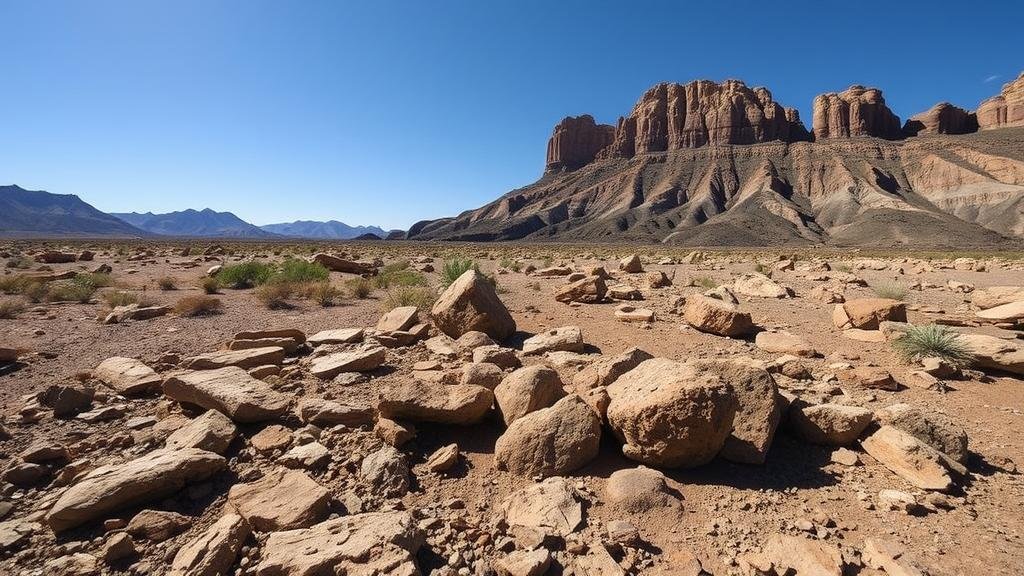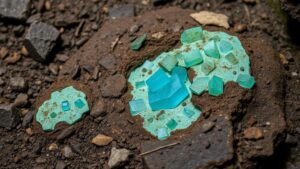Investigating petrified wood fragments in ancient floodplains exposed near the Peloncillo Mountains.
Investigating Petrified Wood Fragments in Ancient Floodplains Near the Peloncillo Mountains
The Peloncillo Mountains, straddling the border between New Mexico and Arizona, harbor a geological wonder that has piqued the interest of rockhounds and mineral collectors alike: petrified wood fragments found in ancient floodplains. Understanding the origin, formation, and distribution of these fascinating relics can enhance your collecting experience and deepen your appreciation for Earths geological history.
The Geological Background
Petrified wood is the result of a process called permineralization, which occurs when organic material, such as wood, becomes buried under sediment and is subsequently permeated by mineral-rich water. Over thousands to millions of years, the wood fibers are replaced with minerals like silica, calcite, and pyrite, effectively turning the wood into stone.
The ancient floodplains near the Peloncillo Mountains were once lush forests that thrived millions of years ago. regions geology indicates that it was affected by sedimentation from nearby river systems, leading to the preservation of these extraordinary wood fragments. The floodplains are typically composed of a variety of sedimentary deposits, ranging from silt and clay to larger gravel and quartz fragments, which contribute to the overall mineral diversity within the petrified wood.
Collectors often seek specific characteristics in petrified wood fragments to determine their quality and uniqueness. Here are a few key identifiers:
- Color variations: Petrified wood can exhibit a spectrum of colors due to the mineral content, including reds from iron oxides, greens from copper, and blues from manganese.
- Texture: Look for smooth surfaces, natural patterns, and visible wood grain that can indicate a higher quality specimen.
- Weight: Petrified wood is significantly heavier than untreated wood due to the presence of minerals, so a heavier specimen can be a clue to its petrified nature.
Scientific Data and Age Estimation
The petrified wood found in the Peloncillo area dates back to the late Triassic to early Jurassic periods–approximately 200 to 250 million years ago. This timeline corresponds with significant geological events, including the rise of dinosaurs and major shifts in climatic conditions. Scientists estimate that the average rate of petrification is around 1 million years for a complete transformation, lending invaluable insight into the ancient ecosystems.
Recent studies measuring the isotopic composition of carbon within these wood fragments have indicated that they originated from coniferous trees, which were common in the prehistoric landscapes. The chemical composition can be analyzed through techniques such as X-ray diffraction, with results revealing the specific mineralization processes that affected the wood over millennia.
Practical Tips for Collectors
For rockhounds interested in collecting petrified wood near the Peloncillo Mountains, consider the following tips:
- Research legal collecting locations. Always check local regulations, as some areas may prohibit collection or have guidelines regarding quantity limits.
- Equip yourself with the right tools. A sturdy rock hammer, safety goggles, and a hand lens can help you identify and extract specimens more effectively.
- Identify promising sites. Look for riverbanks, cliff faces, or eroded areas within the floodplain since these locations often reveal previously buried petrified wood fragments.
- Join local rockhounding groups or forums. Connecting with other enthusiasts can enhance your learning and increase your chances of finding unique specimens.
Real-World Applications and Significance
Petrified wood is not just appreciated for its aesthetic qualities; it also has significant educational and scientific implications. Research on this ancient material can inform us about past climates, ecological shifts, and the evolution of plant life on Earth. Also, petrified wood serves as a popular material in jewelry and home decor, seamlessly merging natural beauty with artistic expression.
Conclusion
Investigating petrified wood fragments within the ancient floodplains near the Peloncillo Mountains offers a unique opportunity for collectors and enthusiasts to connect with Earths geological narrative. By combining knowledge of the formation process, identifying characteristics, and practical collecting tips, individuals can enhance their experience while contributing to the preservation and understanding of these extraordinary relics. Remember, each piece of petrified wood is not merely a geological artifact; it is a window into a distant past that invites curiosity and exploration.



